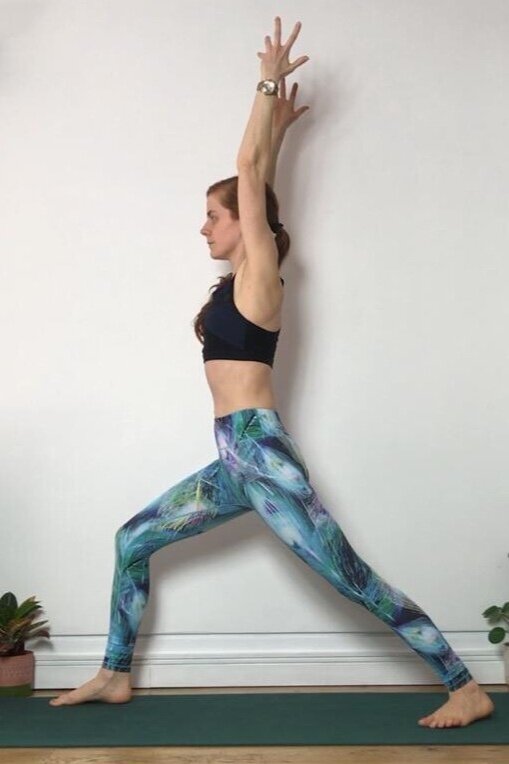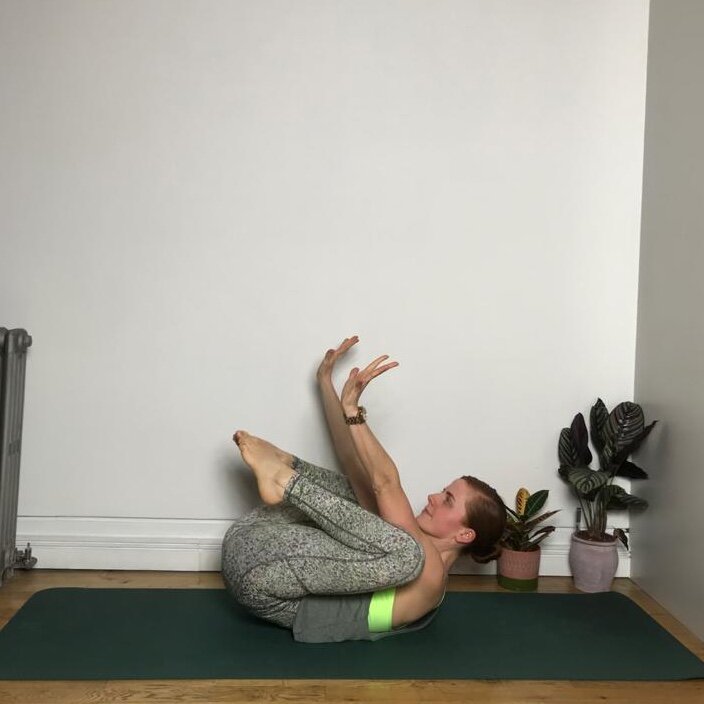Transitions: warrior 1 to warrior 3
Olivia Marley
Our last focus area in class was transitions (which is simply the yoga word for how you move from one pose to the other). It’s easy to just focus on the individual postures in this discipline but spending some time thinking about how you’re moving from one to the other has a few key benefits:
It’ll probably make you slow down. This is useful to help you pay more attention to what you’re feeling in your body, and also because moving slowly builds more strength (in the transitions we looked at this month, moving slowly was building strength in students’ legs, hips, core and shoulders)
Slowing your movements down in flow yoga should also slow your breathing down. And with everything that’s going on around coronavirus right now breathing a bit slower and deeper sounds like a good idea!
More broadly, this kind of practice can help you train yourself to keep paying attention and not get overwhelmed in a challenging and shifting situation
The first transition we looked at in detail was warrior 1 to warrior 3. We were using the arms alongside your body variation of warrior 3 – I like that one because I like how it switches on my back muscles. But you can have your arms reaching forward/ hands in prayer/ however you like! Here are the steps we went through and one key adjustment I was cueing for my students:
We start in warrior 1. I like to practice and teach this posture with my feet hip width apart across my mat, rather than one behind each other. This foot placement feels nicer in my back and also makes me feel more balanced (which is useful since we’re about to stand on one leg!).
See my earlier blog post about foot placement in warrior 1 here if you have any questions about this!
From warrior 1 bring your arms down by your sides. Shrug your shoulder blades down your back away from your ears and squeeze them a little towards each other.
Turn your palms to face forwards and feel your upper back switching on. Try and keep that feeling in your upper back as we move through the next few steps!
In some bodies when you lean forward like this the extra weight being carried by your front leg will make your hips skew out to that side (ie towards your front leg). The video below shows how I cue my students to minimise this.
If it feels like your hips skew out to the side when you lean forwards, put your thumb in the crease at the front of that hip (ie in the fold in your body where your torso meets your leg). With your hand guide your outer hip towards the back of your mat and a little in towards the centre of your mat. Then try and keep your pelvis in the position as you remove your thumb and reach your arm alongside you again.
Then, once your hips are set as shown in the above video, lift your back heel and pivot slightly on your back foot so that your hips square a little more towards the front of your mat. This step will help your hips be more even when you shift into warrior 3.
Notice that there is more weight on your front leg now and the extra effort that requires of your front leg. Don’t let that freak you out! Take a couple of slow breaths and just notice how it feels. Shifting your weight forwards like this has started the transition to our next pose.
Keep shifting more of your body weight forwards on to your front leg until eventually your back leg gets so light it lifts off the floor. Once you’re in warrior 3 press down through the big toe of your standing foot and feel that foot making lots of continuous tiny adjustments to keep you upright.
Then when you want to come up don’t let your focus go! Think about where you want to place your top foot when it lands, then bend your standing leg and as slowly as you can shift your weight back again to warrior 1.
PS Excuse that my leg got cut off in that last photo! Trying to fit yourself in the camera lens while at home because the country is in lockdown doesn’t always work…. 🤦🏻♀️😂 And, as always, please comment below if you have any questions!












